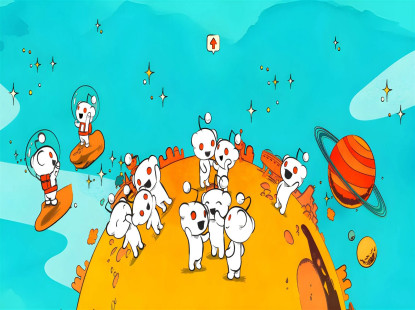
Porter's Five Forces with case study on Twitter
Porter's Five Forces is a model developed by Michael Porter, a professor at Harvard Business School, to analyze the competitive forces in an industry and how they impact the profitability of businesses operating within that industry. The model consists of five forces that determine the intensity of competition in an industry and the potential for profitability:
Threat of new entrants: This force looks at how easy it is for new companies to enter the market and compete with existing firms. If it is easy for new companies to enter the market, then the existing firms will face increased competition and potentially lower profits.
Bargaining power of buyers: This force looks at the power of customers to negotiate lower prices or better terms from the firms that sell to them. If customers have a lot of bargaining power, then firms will have to lower their prices or offer better terms in order to remain competitive.
Bargaining power of suppliers: This force looks at the power of the firms that sell raw materials or other inputs to the firms in the industry. If the suppliers have a lot of bargaining power, then they can charge higher prices or offer worse terms to the firms in the industry, which can reduce the firms' profits.
Threat of substitute products or services: This force looks at the availability of alternative products or services that customers can switch to if they are not satisfied with the products or services offered by the firms in the industry. If there are many substitute products or services available, then the firms in the industry will face increased competition and potentially lower profits.
Rivalry among existing competitors: This force looks at the intensity of competition among the firms already operating in the industry. If there is intense rivalry, then the firms will be competing fiercely for market share and profits may be lower.
By analyzing these five forces, businesses can better understand the competitive landscape of their industry and make strategic decisions to improve their profitability. For example, if the threat of new entrants is high, a firm may choose to invest in building strong brand recognition or developing unique products in order to make it more difficult for new firms to enter the market. If the bargaining power of buyers is high, a firm may choose to focus on building strong relationships with its customers and offering high-quality products or services in order to maintain customer loyalty.
In summary, Porter's Five Forces is a useful tool for analyzing the competitive forces in an industry and the potential for profitability. By understanding the intensity of each of these forces, businesses can make strategic decisions to improve their competitiveness and increase their profits.

Twitter Case Study
Twitter is a social media platform that allows users to post and interact with short messages called "tweets." The platform has become a popular way for individuals and businesses to share information and connect with others. Here is a case study of how Porter's Five Forces can be applied to Twitter:
Threat of new entrants: The threat of new entrants to the social media industry is relatively low, as it requires a significant amount of capital and resources to develop a new platform and gain a significant user base. However, the threat of new entrants to the microblogging segment of the social media industry, in which Twitter operates, may be higher. This is because the barriers to entry for microblogging platforms are relatively low compared to other types of social media platforms.
Bargaining power of buyers: In the case of Twitter, the buyers are the users of the platform. The bargaining power of these buyers is relatively low, as they do not pay for the service and have few alternatives to switch to.
Bargaining power of suppliers: Twitter's primary suppliers are the companies that provide the servers and other infrastructure necessary to operate the platform. These suppliers have relatively low bargaining power, as there are many companies that offer these types of services and Twitter can switch to a different supplier if necessary.
Threat of substitute products or services: The threat of substitute products or services for Twitter is relatively high, as there are many other social media platforms that offer similar microblogging services. Users can easily switch to a different platform if they are not satisfied with Twitter.
Rivalry among existing competitors: The rivalry among existing competitors in the microblogging segment of the social media industry is high, as there are many platforms vying for users' attention. This intense rivalry can lead to price wars and other tactics to gain market share, which can impact Twitter's profitability.
Overall, Twitter faces strong competition in the microblogging segment of the social media industry, with high threats of substitute products or services and intense rivalry among existing competitors. However, the low bargaining power of buyers and the relatively low threat of new entrants may help to mitigate these competitive forces.





